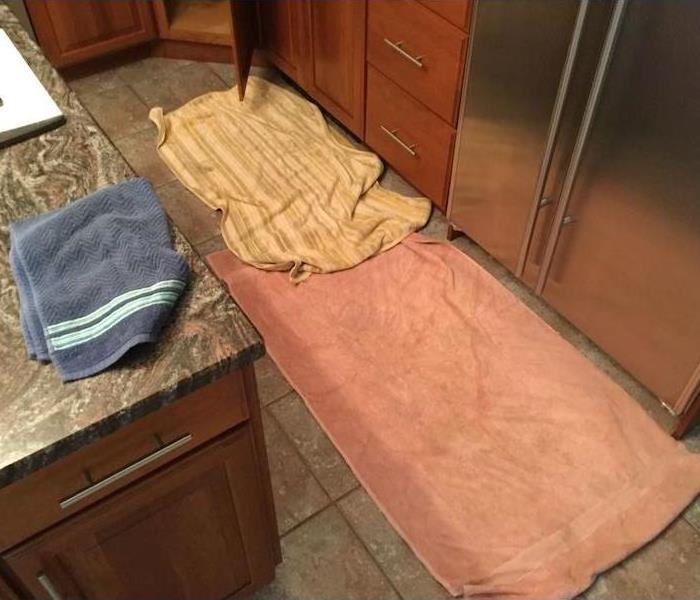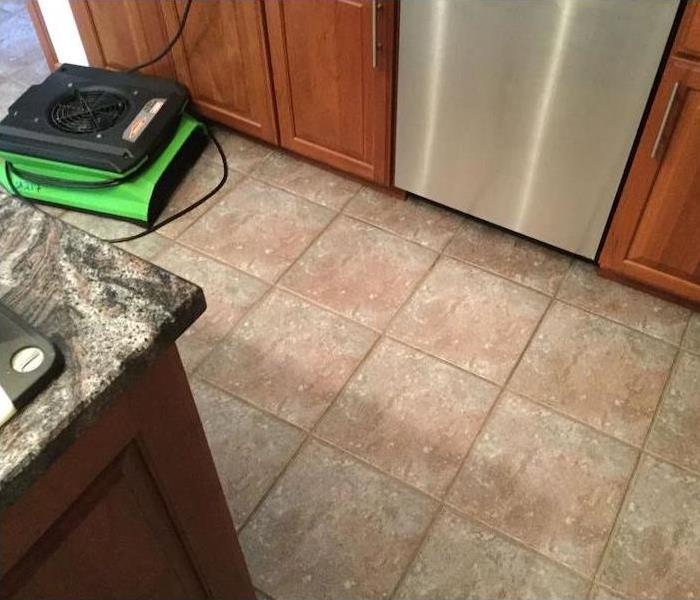Quick-Thinking Smithtown Resident Responds to Burst Refrigerator Pipe Before Calling SERVPRO
Smithtown homeowner partners with SERVPRO of Greater Smithtown for water damage emergency services
Today’s refrigerators offer ice and chilled water as a desired convenience for Smithtown homeowners. Plumbed directly from a dwelling’s freshwater supply source, the lines to the refrigerator and freezer thread behind and under kitchen cabinets, hidden while they deliver the water for dispensing and ice.
How Did the Property Owner React to a Kitchen Flood?
Recently a Smithtown homeowner awoke to a kitchen floor swimming in water. A rapid review of the tangle of pipes under the sink and a look at the dishwasher hoses revealed no clues either place as to the source of the widening pool. After a quick check of a nearly empty ice bin and receiving no flow from the water dispenser, the owner realized the refrigerator water line was the culprit. The property owner tossed towels down to absorb the standing water after shutting the valve of the line to the refrigerator. Although the towels soaked up nearly all of the visible water, the built-in cabinets were a significant hidden water clean up concern. A call to SERVPRO of Greater Smithtown promptly brought a well-equipped and trained water damage remediation crew to the home for professional assessment and water damage repairs.
What Are the Consequences After a Refrigerator Water Pipe Bursts?
When leaks develop because of a cracked hose or loose or defective connector in a refrigerator supply line, the water damage can start small and go unnoticed. Even though the problem is minor, materials saturate and then deteriorate, with the probability of significant damage occurring pending eventual discovery. In this Smithtown kitchen’s case, however, the burst pipes created an immediate and substantial flow of water that caught the homeowner's attention. Fast actions on the part of the customer actually made this urgent event an easier water damage repair for the SERVPRO team because:
- The owner deduced the location of the leak and shut off the water
- The owner mitigated the visible water spread with towels
- The owner realized trapped under-cabinet water could be an issue, and called SERVPRO for assistance at once
How Did SERVPRO Manage Water Removal from Under Cabinets and Other Confined Spaces?
SERVPRO of Greater Smithtown arrived with the Institute of Inspection, Cleaning and Restoration Certification (IICRC)-trained technicians and professional water removal and drying equipment. We planned additional interventions using our customer’s prior response as a springboard to finalize water damage restoration. Because of SERVPRO’s extensive experience with burst pipes in kitchens, the technicians responding to this refrigerator leak scanned for water migration and determined moisture levels in affected structural components and fixtures.
The crew used the following to trace the spread and gather excess moisture data during water removal and drying:
- Moisture sensors
- Moisture meters
- Thermo-hygrometers
Did SERVPRO Need to Remove the Kitchen Cabinets?
Although a concerning quantity of water remained under the cabinets after the towels absorbed visible water, SERVPRO technicians accessed the trapped water by removing the toe kicks at the base of the cabinets. Their removal permitted extraction equipment to reach the water and an assessment of the grout and drywall condition under the built-ins. The grout seal held in this Smithtown kitchen, so after the liquid water extraction the final steps were:
- Determining drying goals based on data from the affected materials and dry materials elsewhere in the Smithtown home
- Positioning of air movers to accelerate the evaporation of the lingering moisture, as seen in the after picture
- Adjusting temperature to enhance evaporation
- Using dehumidifiers to capture the evaporated water for proper disposal






 24/7 Emergency Service
24/7 Emergency Service
